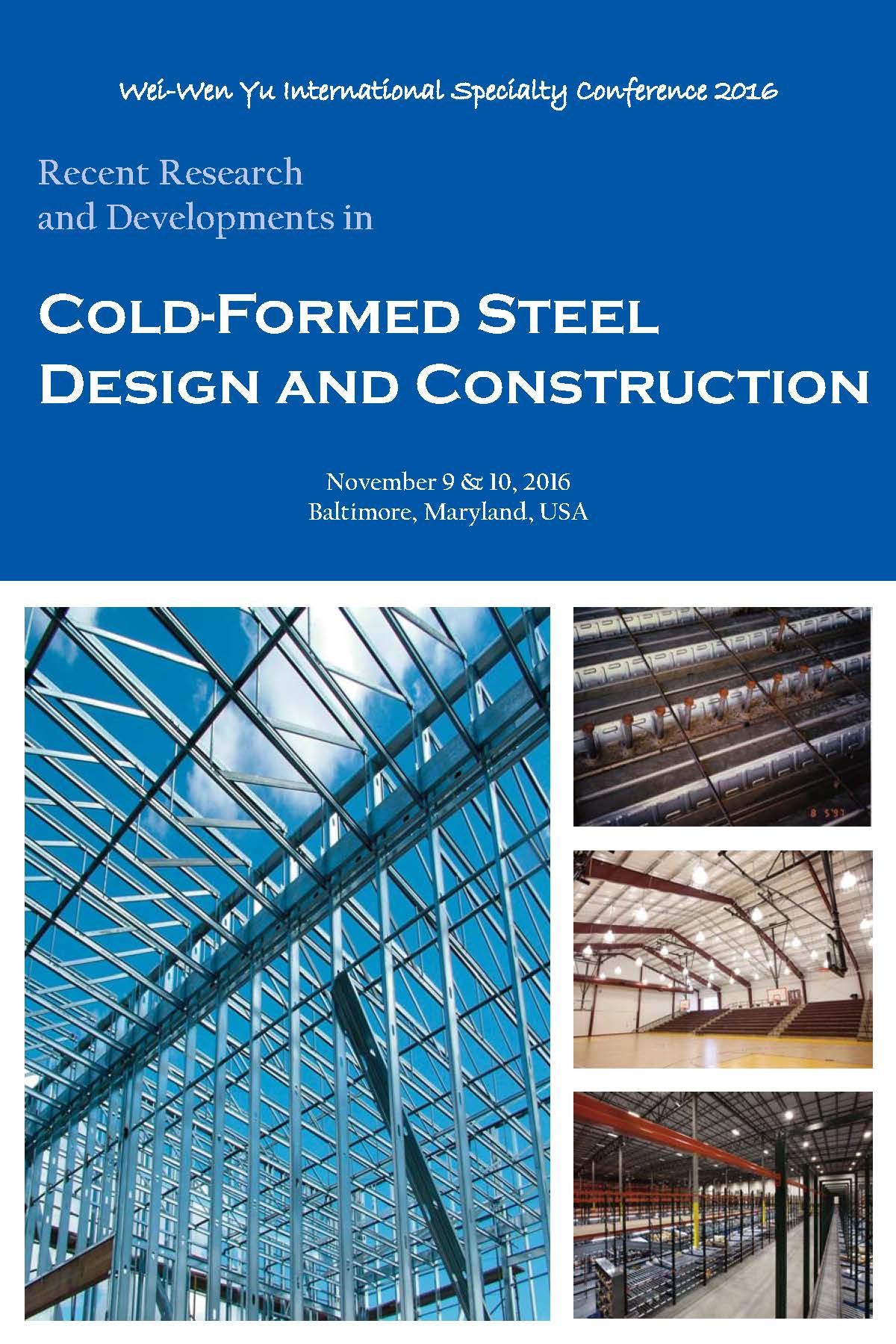Session Dates
10 Nov 2016
Abstract
The objective of this paper is to present seismic modeling of a two-story cold-formed steel (CFS) framed building. The selected building, known as the CFSNEES building, was designed to current U.S. standards and then subjected to full-scale shake table tests under the U.S. National Science Foundation Network for Earthquake Engineering Simulation (NEES) program. Test results showed that the building’s stiffness and capacity was considerably higher than expected and the building suffered only non-structural damage and no permanent drift, even at maximum considered earthquake (per ASCE 7 and the selected California site) level. Past modeling, including that of the authors, largely focused on nonlinear hysteretic modeling of the shear walls. The test results indicate that additional building elements must be considered to develop an accurate characterization of the strength, stiffness, and ductility of the building. Advanced 3D models were developed in OpenSees to accurately depict the lateral response and included all structural and non-structural framing and sheathing, explicit diaphragm modeling, and nonlinear boundary conditions to capture bearing load paths. This paper details the modeling techniques adopted and typical results including comparison with experiments. The impact of the various modeling assumptions on the results is also explored to provide a measure of system sensitivity. In addition, incremental dynamic analysis was performed on the building model and the results post-processed consistent with the FEMA P695 protocol. For the CFS-NEES building, designed to current standards, results indicate that the advanced model predicts an acceptable collapse margin ratio. In the future, the modeling protocols established here provide a means to analyze a suite of CFS-framed archetype buildings and provide further insight on seismic response modification coefficients.
Department(s)
Civil, Architectural and Environmental Engineering
Research Center/Lab(s)
Wei-Wen Yu Center for Cold-Formed Steel Structures
Meeting Name
International Specialty Conference on Cold-Formed Steel Structures 2016
Publisher
Missouri University of Science and Technology
Document Version
Final Version
Rights
© 2016 Missouri University of Science and Technology, All rights reserved.
Document Type
Article - Conference proceedings
File Type
text
Language
English
Recommended Citation
Leng, J.; Buonopane, S. G.; and Schafer, B. W., "Seismic Modeling and Incremental Dynamic Analysis of the Cold-Formed Steel Framed CFS-NEES Building" (2016). CCFSS Proceedings of International Specialty Conference on Cold-Formed Steel Structures (1971 - 2018). 4.
https://scholarsmine.mst.edu/isccss/23iccfss/session11/4
Seismic Modeling and Incremental Dynamic Analysis of the Cold-Formed Steel Framed CFS-NEES Building
The objective of this paper is to present seismic modeling of a two-story cold-formed steel (CFS) framed building. The selected building, known as the CFSNEES building, was designed to current U.S. standards and then subjected to full-scale shake table tests under the U.S. National Science Foundation Network for Earthquake Engineering Simulation (NEES) program. Test results showed that the building’s stiffness and capacity was considerably higher than expected and the building suffered only non-structural damage and no permanent drift, even at maximum considered earthquake (per ASCE 7 and the selected California site) level. Past modeling, including that of the authors, largely focused on nonlinear hysteretic modeling of the shear walls. The test results indicate that additional building elements must be considered to develop an accurate characterization of the strength, stiffness, and ductility of the building. Advanced 3D models were developed in OpenSees to accurately depict the lateral response and included all structural and non-structural framing and sheathing, explicit diaphragm modeling, and nonlinear boundary conditions to capture bearing load paths. This paper details the modeling techniques adopted and typical results including comparison with experiments. The impact of the various modeling assumptions on the results is also explored to provide a measure of system sensitivity. In addition, incremental dynamic analysis was performed on the building model and the results post-processed consistent with the FEMA P695 protocol. For the CFS-NEES building, designed to current standards, results indicate that the advanced model predicts an acceptable collapse margin ratio. In the future, the modeling protocols established here provide a means to analyze a suite of CFS-framed archetype buildings and provide further insight on seismic response modification coefficients.



